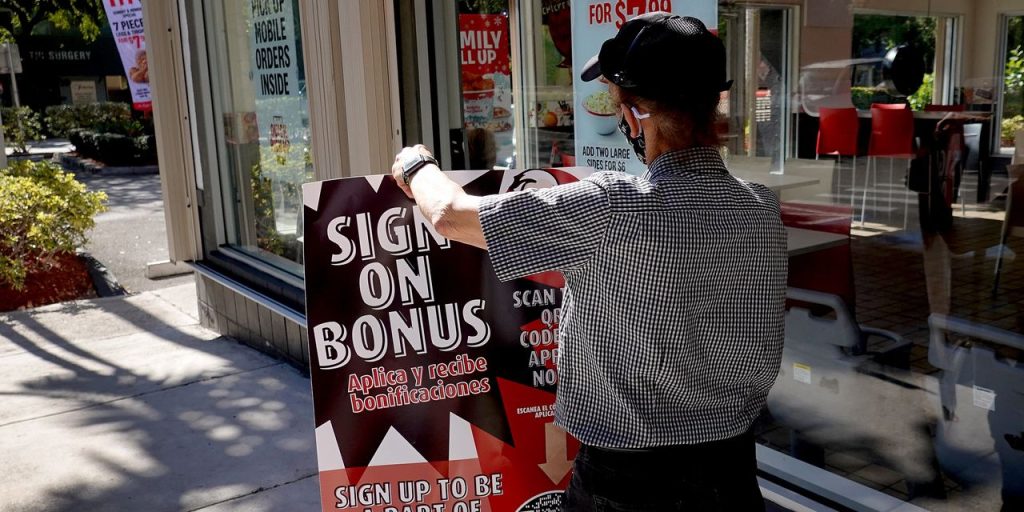The numbers: The U.S. added a modest 150,000 new jobs in October in a sign of a cooling demand for labor, as higher interest rates take a bite out of the economy.
Economists polled by the Wall Street Journal had forecast 170,000 jobs. Employment likely would have grown by about 180,000 if not for the auto workers strike.
Still, the pace of job creation slowed sharply from a downwardly revised 297,000 increase in September that now looks like an aberration. Hiring in both September and August was not as strong as originally reported.
The U.S. economy added 150,000 new jobs in October.
Getty Images
The unemployment rate, meanwhile, rose a tick to 3.9%, the government said Friday. That’s the highest level since the beginning of 2022.
The Federal Reserve is betting the labor market will continue to soften and help reduce the upward pressure on labor costs, potentially giving it the leeway to end its latest cycle of interest-rate increases.
The Fed sharply raised U.S. interest rates from early 2022 to the summer of 2023 to try to slow the economy and tame inflation, but it’s been on hold since July.
Labor costs rose slightly in October. Average hourly wages increased 0.2%.
The rise in pay over the past year slowed again to a nearly 2 1/2-year low of 4.1% from 4.3% in the prior month. While that’s still too high for the Fed, it’s trending in the right direction.
Wages were rising a little over 3% a year before the spike in inflation that followed the pandemic.
“This is the first time in awhile that all the various indicators the jobs report tries to measure went in the same direction: cooling,” said Jesse Wheeler, senior economist at the decision-intelligence company Morning Consult.
Key details: Employment rose by just 99,000 if government is excluded. Public-sector jobs increased by 51,000 last month.
Health-care providers created about half of all the new private-sector jobs in October
Employment also rose slightly in construction, leisure and hospitality, social work and professional occupations.
Manufacturers showed a decline of 33,000 jobs, but that was entirely because of the United Auto Workers strike against GM
GM,
Ford
F,
and Stellantis
STLA,
Employment also fell in transportation and warehousing.
See where all the jobs are with MarketWatch’s interactive tool
The government cut its estimate of job gains in September to 297,000 from 336,000. The increase in employment in August was also lowered to 165,000 from 227,000.
The share of people working or looking for work, meanwhile, fell a tick to 62.7% and came off a post-pandemic high.
Higher labor-force participation can also help reduce inflation. When more people look for work, companies don’t have to raise wages as much.
Big picture: The labor market is still quite sturdy, but businesses are not hiring as many people as they were a year ago.
Part of the reason is because workers are hard to find owing to the worst labor shortage since World War Two. But lots of companies are suffering from slower sales, especially in interest-rate sensitive industries such as housing and manufacturing.
So long as most people are working and spending money, the U.S. is likely to avoid a recession, but if business sales and profits slow much further, companies are more likely to lay off workers and put the current economic expansion at risk.
Looking ahead: “Today’s report suggests that the job market is, in fact, slowing. September seems to have been just a momentary upward blip in the jobs numbers,” said Seema Shah, chief global strategist, at Principal Asset Management. “This jobs report further increases the chances of no [Fed] move in December.”
Market reaction: The Dow Jones Industrial Average
DJIA,
and S&P 500
SPX
rose in Friday trades.
The yield on the 10-year Treasury
BX:TMUBMUSD10Y
sank to 4.52%. Investors viewed the soft jobs report as further evidence the Fed won’t raise rates again.
Read the full article here




